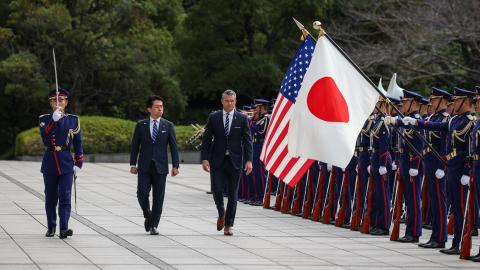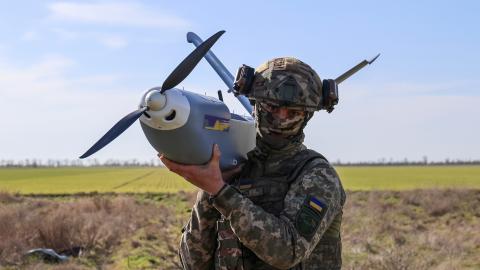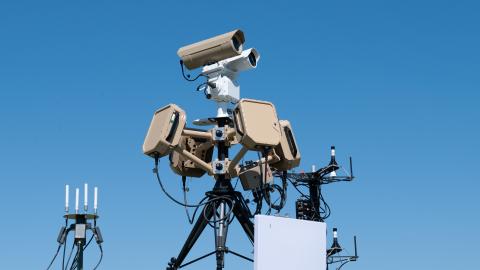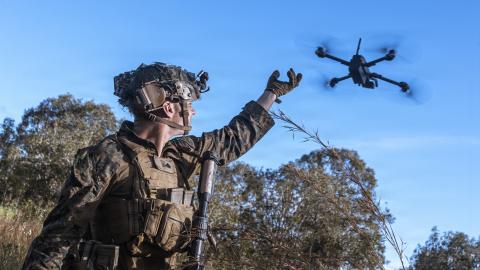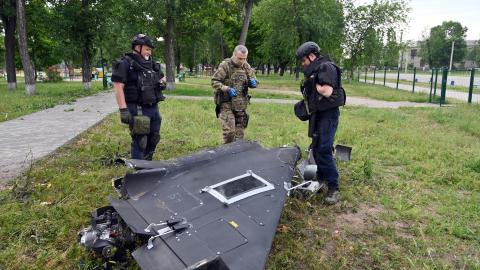Executive Summary
- Ukraine’s asymmetric strikes: Ukrainian security services struck strategic air bases deep inside Russia and the geopolitically important Crimean Bridge, which connects the occupied peninsula to mainland Russia.
- Battlefield assessment: Battlefield trends still favored Russian forces, which targeted Pokrovsk, Toretsk, and Chasiv Yar, among other flashpoints.
- Moscow-Pyongyang cooperation: Russian offensive action also continued in Sumy, where North Korean troops may soon join the fight.
1. Ukraine’s Asymmetric Attacks Hammer Russia
On June 1 Ukraine launched over 100 unmanned aerial vehicles against air assets deep inside Russia in a Trojan Horse–like strike. Agents of the Security Service of Ukraine (SBU) smuggled the drones into Russia in containers with remote-controlled lids. The containers were then loaded onto trucks, which were driven near Russian air bases that host a significant part of the country’s bomber fleet. Once the trucks were in position, Ukraine activated the drones against their targets.
Despite its repressive regulation of the internet, the Kremlin could not prevent news of the attacks from spreading online. Dubbed Operation Spider’s Web, the robotic strike targeted strategic bombers at the Belaya, Ivanovo, Ukrainka, Olenya, and Dyagilevo air bases. Data obtained from synthetic aperture radar (SAR) satellite imagery revealed that Ukraine destroyed or damaged several Tu-95 and Tu-22 strategic bombers.
SAR-boosted satellite imagery can see through the dense clouds that covered many of Russia’s bases at the time of the attacks. This makes it a useful all-weather imagery intelligence (IMINT) tool for open-source intelligence (OSINT) analysis. But SAR imagery does not suffice to produce complete intelligence assessments. Analysts therefore have to pair IMINT data from SAR satellites with other sources such as social media videos. Such visuals show smoke rising from the Belaya air base following the Ukrainian attacks. Footage of the drone strikes on Olenya air base has also surfaced, suggesting that the base, which hosts Tu-95s and possibly an AN-12 aircraft, was hit particularly hard. Realistic estimates suggest that Ukraine damaged 13 percent of the Russian bomber fleet, though Kyiv claims the figure is in the range of 30 percent. While the exact number of destroyed or damaged Russian assets remains unknown, it is clear that Ukraine inflicted significant harm. Importantly, Russia cannot quickly repair or replace many of its potentially crippled assets, including its Tu-95, Tu-22M, or Tu-160 aircraft, which have long threatened Ukraine due to their high combat payload capacity. Ukraine also may have struck one of Russia’s few remaining A-50 aircraft, which play a critical information superiority role.
In another attack on June 3 Ukraine hit the structural supports beneath the Crimean Bridge, which connects Russia to the occupied peninsula. The bridge is a key logistical asset for Moscow’s forces. But it also serves as a symbol of the decade-long Russian invasion of the geopolitically critical Crimean Peninsula. Though this is Ukraine’s third strike on the bridge since Russia’s full-scale invasion in 2022, it is the first time Kyiv has employed underwater solutions against the target. More than one ton of explosives rocked the structure, forcing the Kremlin to temporarily close the bridge to traffic.
2. Battlefield Assessment
Despite Ukraine’s success in drone and asymmetric warfare, the wider battleground changed little last week and still favors Russian forces. In northern Ukraine, heavy combat continued in the direction of Kharkiv. Intense military activity also raged on in Chasiv Yar, Toretsk, Pokrovsk, and in the direction of Kramatorsk. In this sector, Kostiantynivka remains critical to Ukrainian defensive operations. The town stands between the front line of the engagement and Ukraine’s last line of defense in the Donetsk region, the city of Kramatorsk.
Russia also continues to develop novel tactics in drone-on-drone warfare. In a recent engagement, a rotary-wing aerial drone ambushed an unmanned ground vehicle (UGV) by lying in wait and blitzing the platform at an opportune moment. Such attacks will be increasingly common as drone operators get more innovative.
The Sumy region of Ukraine also remains particularly vulnerable. As Moscow and Pyongyang deepen their defense ties, North Korean troops may join Russia’s Sumy offensive in the coming weeks.
